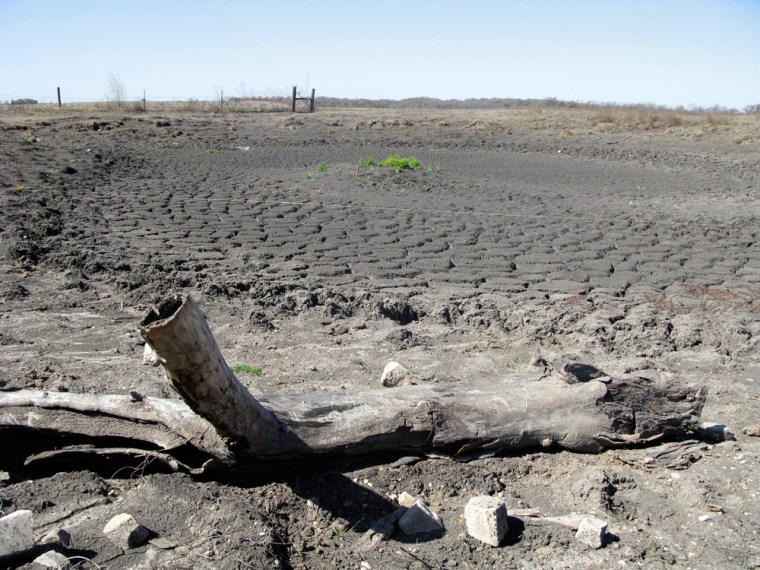If not for the triple-digit heat, central Texas rancher Debbie Davis could almost think it was a different season entirely.
"The (pasture) grass looks like it's the dead of winter," said Davis, who raises beef cattle and Texas Longhorns northwest of San Antonio. The region is enduring its driest 22-month span going back to 1885. "It's horrible. It's probably the worst I've ever seen."
Usually it's West Texas that's hot and dry. Now, central and southern Texas are alone in the nation in experiencing the two most severe stages of drought. About 11 percent of the state was in "extreme" or "exceptional" drought as of June 30, up from 8 percent the previous week.
That's bad news for farmers and ranchers in the nation's No. 2 agriculture state behind California, who could lose billions in crops and livestock.
Ranchers are sending many more cattle to sale barns, which has driven prices down. There's little pastureland to graze on and the cost to ship hay in from out of state is high — as is the price of supplemental feed.
Three years ago in a drought that spanned more than a year, Texas lost $4.1 billion, a crop and livestock record for a single year.
"It could easily be that" again, said Travis Miller, a drought specialist with the Texas AgriLife Extension Service.
'Tale of two states'
The parched parts of the state are south of a line from Del Rio to Waco to Houston, while according to a U.S. Drought Monitor map released last week, much of West Texas is faring well.
"It's a tale of two states," said Victor Murphy, a meteorologist with the National Weather Service in Fort Worth. "The only way out of this drought is some sort of tropical disturbance."
Burn bans are in effect in more than half of the state's 254 counties, and water restrictions never before implemented in San Antonio are likely just days away.
Houston residents welcomed some rain Tuesday, with many areas getting at least an inch and some getting as much as 3 inches. That came after the city saw its driest May 1-July 5 period since records began in 1889, receiving just 0.65 of an inch of rain in those 65 days, compared with about 10 inches usually.
The city had its second-warmest June since 1906, including seven consecutive days with temperatures of at least 100.
Folks in the San Antonio area, officials say, could see a return to drought conditions of the 1950s, which lasted about six years and affected every part of the state. From September 2007 through last month the area has gotten 23.9 inches of rain — less than half the normal amount of about 54 inches.
"It's been ridiculously dry for going on two years now and it doesn't help having exceptionally dry conditions this time of year," said John Nielsen-Gammon, the state's climatologist at Texas A&M University.
'Hoping for a hurricane'
Texas produces about 16 percent of the nation's 31.7 million head of cattle, and more than 60 percent of the state's beef cows are in counties with extreme and exceptional drought.
The culling of the herds is not expected to affect meat prices at grocery stores. Most of the cows sold at auction are being slaughtered and used for hamburger meat. Demand and the sale of ground beef has remained strong despite the struggling economy.
But that could change, because the effects of the drought on livestock aren't short-term. It leads to reduced conception rates and calf crops the next year, and the lack of feed results in lower cattle sale weights.
"We'll have a lot fewer cows next year nationwide, which means higher prices," said David Anderson, an agriculture marketing economist with the Texas AgriLife Extension Service.
Range and pasture recovery from drought can take several years and can result in lower stocking rates while ranges recover.
Crop production on the High Plains in West Texas is probably the state's only hope to avoid another year of multibillion-dollar losses. In March, agriculture officials estimated cattle producers had lost about $830 million going back to last summer.
"Everybody's pretty desperate," said Davis, the rancher. "We're all hoping for a hurricane."
